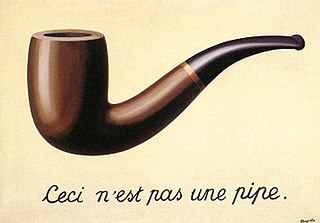
Surrealism is an art and cultural movement that developed in Europe in the aftermath of World War I in which artists aimed to allow the unconscious mind to express itself, often resulting in the depiction of illogical or dreamlike scenes and ideas. Its intention was, according to leader André Breton, to "resolve the previously contradictory conditions of dream and reality into an absolute reality, a super-reality", or surreality. It produced works of painting, writing, theatre, filmmaking, photography, and other media as well.

Meshes of the Afternoon is a 1943 American experimental silent short film directed by and starring wife-and-husband team, Maya Deren and Alexandr Hackenschmied.
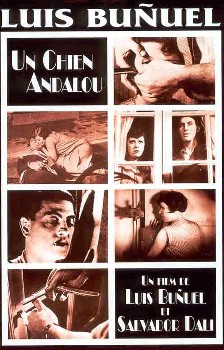
Un Chien Andalou is a 1929 French- Spanish surrealist silent short film directed, produced and edited by Spanish filmmaker Luis Buñuel, who also co-wrote the screenplay with Spanish surrealist painter Salvador Dalí. Buñuel's first film, it was initially released in a limited capacity at Studio des Ursulines in Paris, but became popular and ran for eight months.
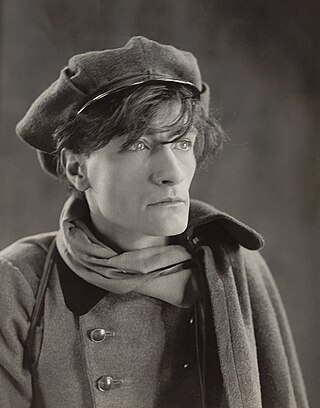
Antoine Marie Joseph Paul Artaud, better known as Antonin Artaud, was a French artist who is widely recognized as a major figure of the European avant-garde. He worked across a variety of media, but is best known for his writings, as well as his work in the theatre and cinema. He had a profound influence on twentieth-century theatre through his conceptualization of the Theatre of Cruelty. Known for his raw, surreal and transgressive work, his texts explored themes from the cosmologies of ancient cultures, philosophy, the occult, mysticism and indigenous Mexican and Balinese practices.

Pierre Batcheff was a French actor of Russian origin. He became a popular film actor from the mid-1920s until the early 1930s, and among his best-known work was the surrealist short film Un chien andalou (1929), made by Luis Buñuel in collaboration with Salvador Dalí. After appearing in about twenty-five films, he died at an early age from a drug overdose.
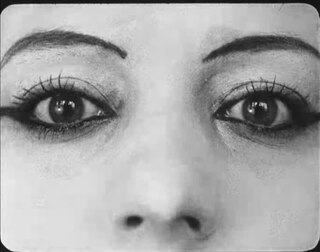
Experimental film or avant-garde cinema is a mode of filmmaking that rigorously re-evaluates cinematic conventions and explores non-narrative forms or alternatives to traditional narratives or methods of working. Many experimental films, particularly early ones, relate to arts in other disciplines: painting, dance, literature and poetry, or arise from research and development of new technical resources.

La Révolution surréaliste was a publication by the Surrealists in Paris. Twelve issues were published between 1924 and 1929.

Germaine Dulac was a French filmmaker, film theorist, journalist and critic. She was born in Amiens and moved to Paris in early childhood. A few years after her marriage she embarked on a journalistic career in a feminist magazine, and later became interested in film. With the help of her husband and friend she founded a film company and directed a few commercial works before slowly moving into Impressionist and Surrealist territory. She is best known today for her Impressionist film, La Souriante Madame Beudet, and her Surrealist experiment, La Coquille et le Clergyman. Her career as filmmaker suffered after the introduction of sound film and she spent the last decade of her life working on newsreels for Pathé and Gaumont.

The Hearts of Age is an early film made by Orson Welles. The film is an eight-minute short that he co-directed with friend William Vance in 1934. The film stars Welles's first wife, Virginia Nicolson, and Welles himself. He made the film while still attending the Todd School for Boys in Woodstock, Illinois, at the age of 19.
Simone Mareuil was a French actress best known for appearing in the surrealist film Un Chien Andalou.
Charles Dekeukeleire was a Belgian film director. He pioneered modern Belgian film with Henri Storck. He was inspired by French avant-garde cinema, particularly the works of Germaine Dulac.

La Souriante Madame Beudet is a short French impressionist silent film made in 1923, directed by pioneering avant-garde cinema director Germaine Dulac. It stars Germaine Dermoz as Madame Beudet and Alexandre Arquillière as Monsieur Beudet. It is considered by many to be one of the first truly "feminist" films. It tells the story of an intelligent woman trapped in a loveless marriage.
Surrealist cinema is a modernist approach to film theory, criticism, and production, with origins in Paris in the 1920s. The Surrealist movement used shocking, irrational, or absurd imagery and Freudian dream symbolism to challenge the traditional function of art to represent reality. Related to Dada cinema, Surrealist cinema is characterized by juxtapositions, the rejection of dramatic psychology, and a frequent use of shocking imagery. Philippe Soupault and André Breton’s 1920 book collaboration Les Champs magnétiques is often considered to be the first Surrealist work, but it was only once Breton had completed his Surrealist Manifesto in 1924 that ‘Surrealism drafted itself an official birth certificate.’

Women Surrealists are women artists, photographers, filmmakers and authors connected with the surrealist movement, which began in the early 1920s.
Non-narrative film is an aesthetic of cinematic film that does not narrate, or relate "an event, whether real or imaginary". It is usually a form of art film or experimental film, not made for mass entertainment.
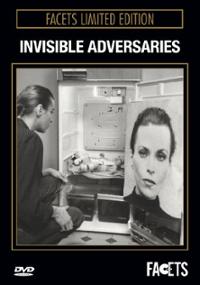
Invisible Adversaries is a 1977 Austrian experimental drama film directed by Valie Export, her debut feature film.

The Studio des Ursulines is a cinema in the 5th arrondissement of Paris, at No.10, Rue des Ursulines. It is one of the oldest cinemas in Paris to have kept its facade and founder's vision: to offer a venue for art and experimental cinema. Gilles Renouard of Paris Cinéphile describes it as 'an astonishing experience' for its nostalgic associations and being able to be within 3 metres of the screen if you sit in the balcony. It has 1 screen.

Luis Buñuel Portolés was a Spanish filmmaker who worked in Spain, Mexico and France. Buñuel is noted for his distinctive use of mise-en scene, distinctive sound editing, and original use of music in his films. Often Buñuel applies the techniques of mise-en-scène to combine multiple single scenes within a film directed by him to represent more encompassing aspects of the film when viewed as a whole.















